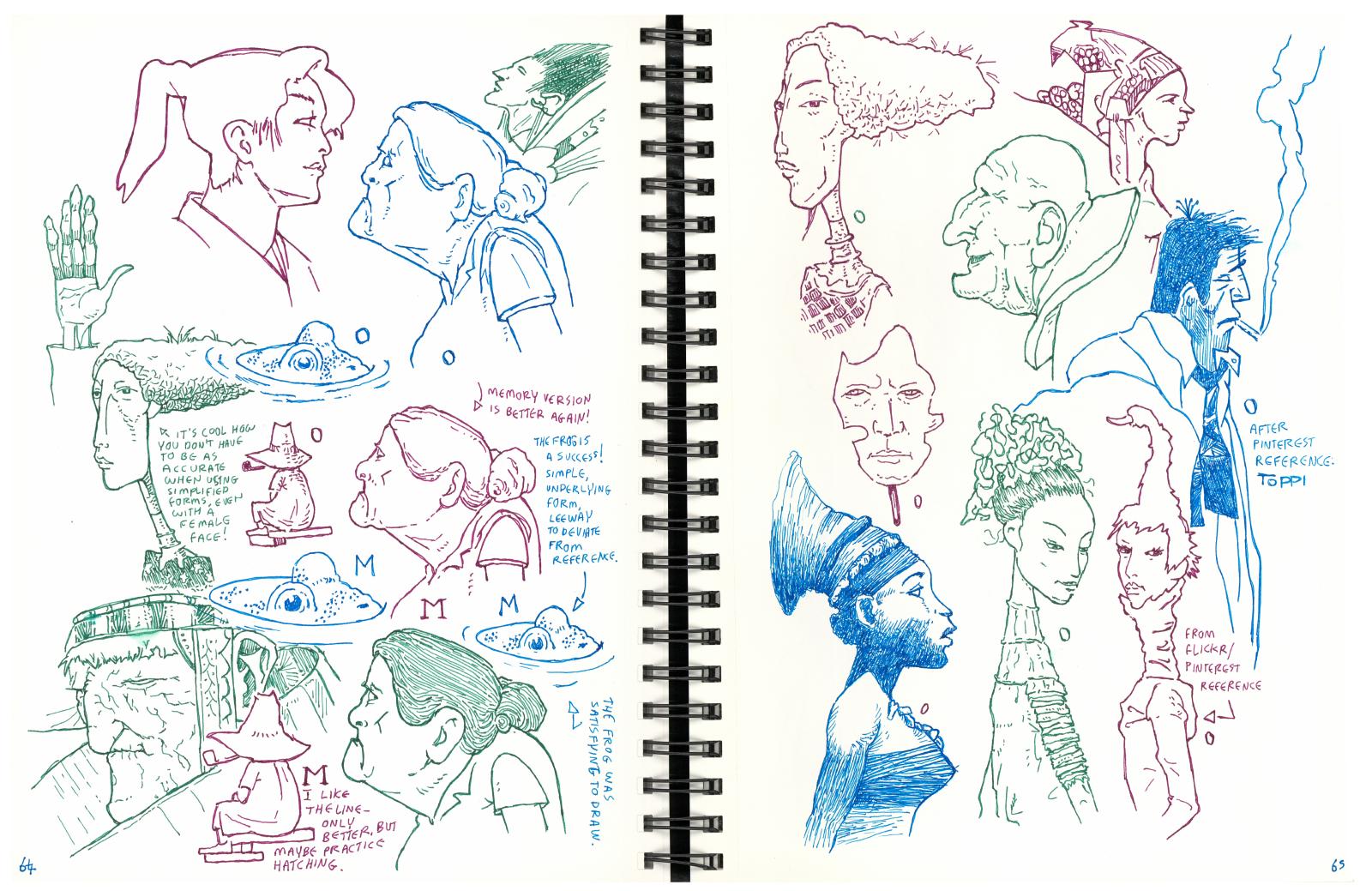#155 - Test-Based Learning For Artists
Insights on how we learn best, and how to apply that to becoming better at drawing.Warm-Up Drawing Exercises

Sample of sketchbook page where I drew things after having done shape and form studies first. See my workbook.
Scientists have found ways to learn effectively. It boils down to testing yourself first, encoding the information that is not in your brain yet, and repetition.
Test
We implemented the following routine: She had to test herself by trying to recall all the foreign language words for each native version. When she got it right, she got two points, and when she got it wrong, she got zero.
When she left the field open, she got one point. This encouraged her to admit she didn’t know instead of guessing.
It is crucial to find out what you don’t know so that you can work on that.
This also implied she should not cheat. When you don’t know the answer, and the sheet of paper is right there near you, it’s seductively easy to take a quick peek. The problem with that is that, yes, now your entry is correct, but no, it’s still not in your brain. You will still do it wrong the next time.
It’s irresistible to cheat in the beginning. It’s only after you have seen the benefits of not cheating—which is that you discover what you don’t know—that you lose the urge to cheat.
And she could exchange every so many points for a candy. It was gamification, and it worked well. She started getting high grades.
Encode
Then we’d look carefully at each word she had gotten wrong or didn’t know, and we spent time with each word, focused, concentrated, trying to remember it, trying to find mnemonics for it, trying to tie it to other information in our brain.
Repeat
If you do the test again, and the amount of information you have to retain is manageable, you’ll do amazingly well the second time if you do it right immediately after memorizing the new information. It feels like magic; suddenly, you know all these things you didn’t know a half hour ago!
That is very motivating. And that is why you should do that.
The problem is that it is still in your short-term memory, so you have to repeat the same routine in the days and weeks after.
For Artists
This is a newsletter for artists. How does this relate to our drawing practice?
Memory drawing (see my workbook ) does precisely that. You study an image, put it away (no cheating!), and try to draw it from memory (the test). Then, you compare with the reference and see which details you missed and which proportions and orientations you got wrong. You carefully study the corrections, maybe drawing them over the original or redrawing the reference image from observation (encoding) and then redrawing the entire reference image from memory immediately after that and in the days and weeks after that (repetition.)
It’s fun to suddenly be able to draw something well from memory, seemingly from imagination.
An additional advantage is that you now get to play with the reference. You know it by heart and can change details, proportions, and angles.